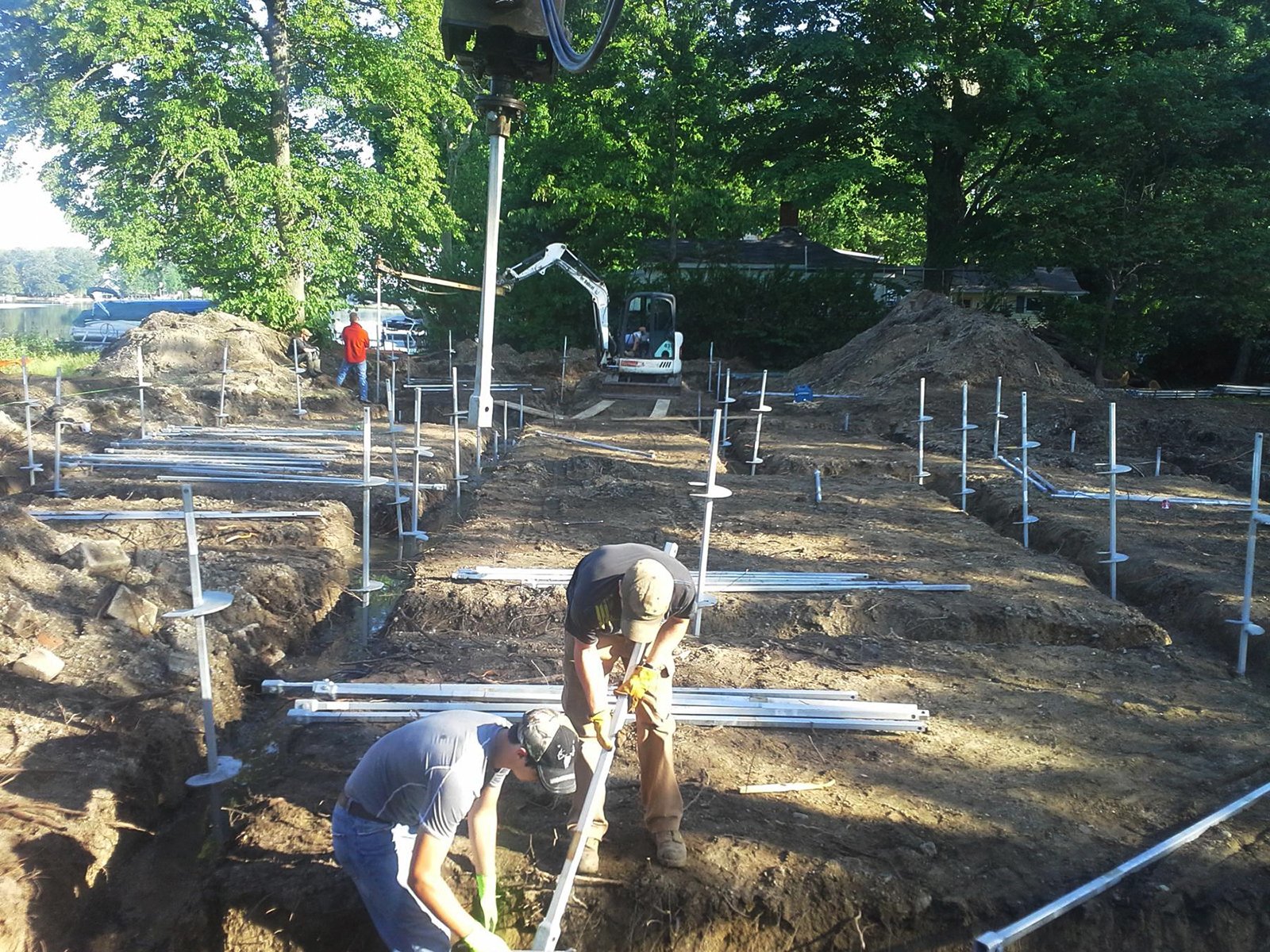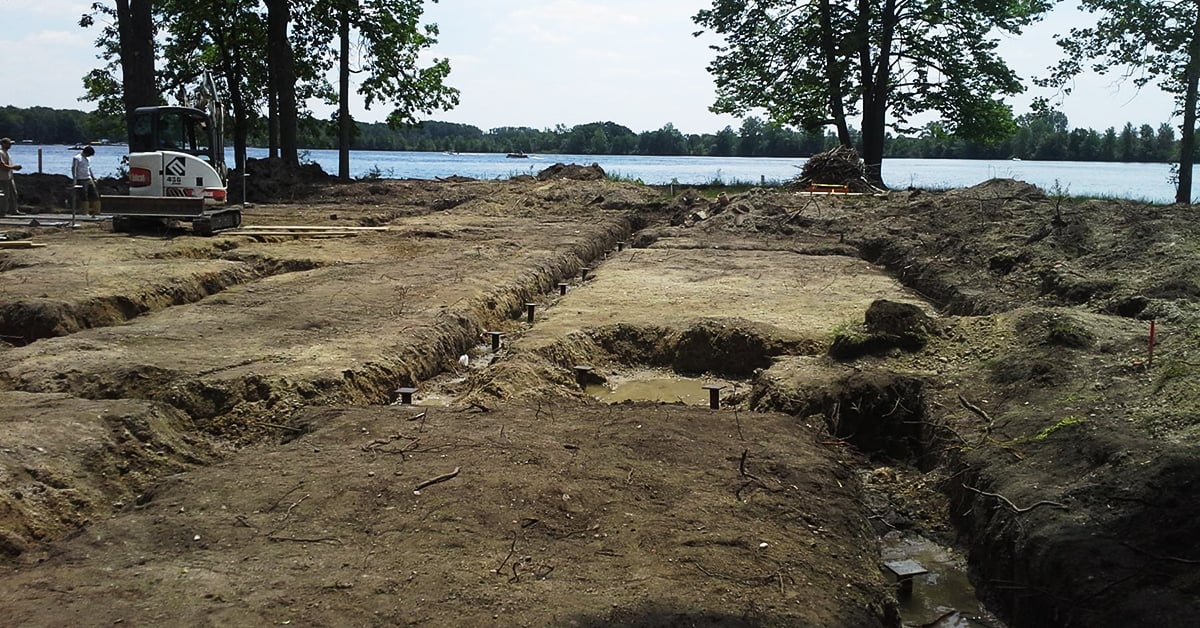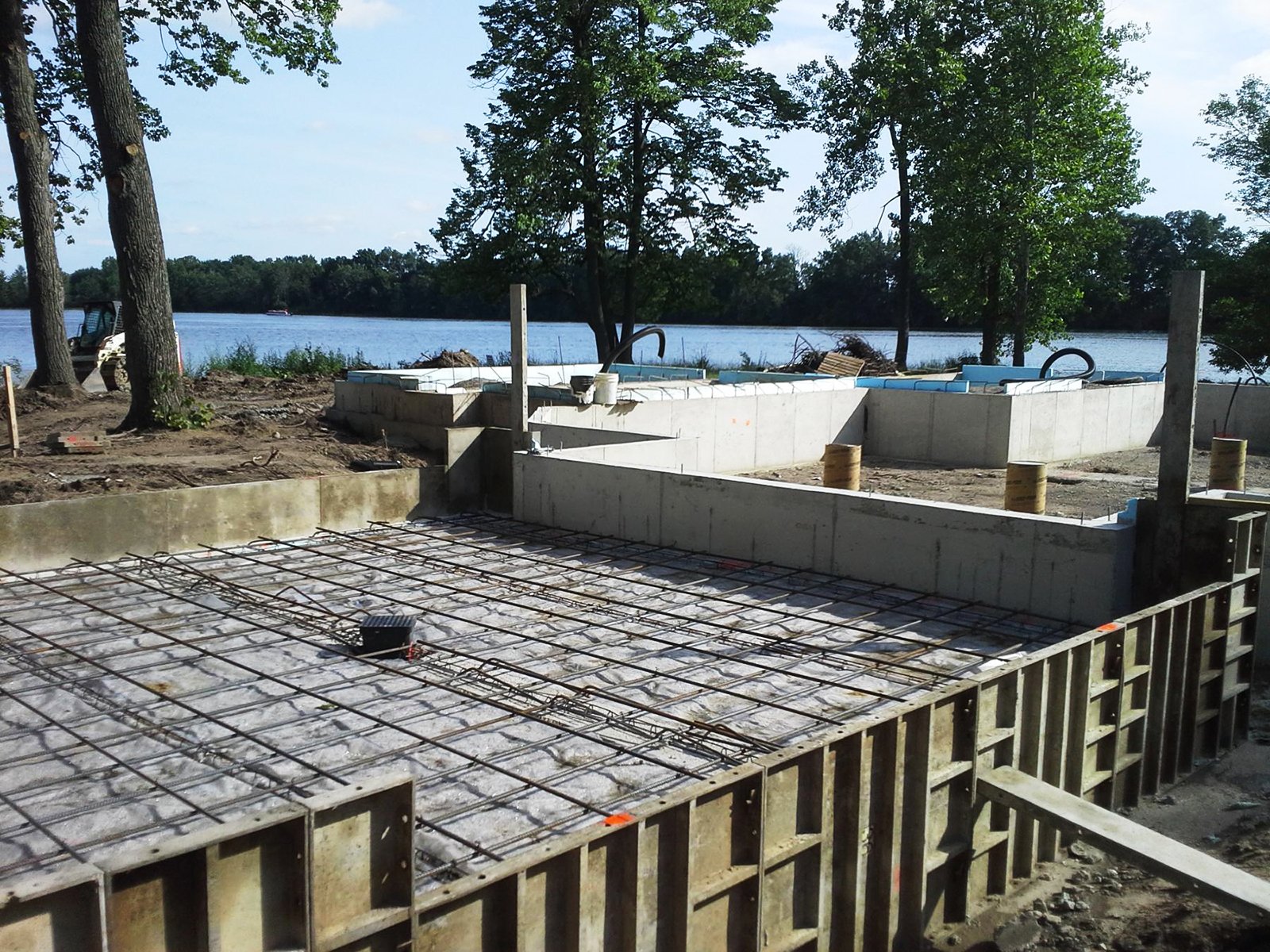Located in south central Michigan, Iyopawa Island is home to a nine-hole golf course surrounded by houses. One of these homes was designed with a deep foundation that extends approximately 64-feet into the ground. Here’s why the engineers went “deeper” than a traditional concrete slab or basement foundation.
Thinking about helical piles for your new construction foundation? Learn more!
The loose sandy soil on the desired build site for the 4,000 square foot home was less than desirable. Due to the build site being on an island, there was limited access for large construction equipment. Construction noise and vibration were considered since the island’s main feature is the Iyopawa Island Golf Course… and you certainly won’t make friends with your new neighbors by ramming driven piles into the ground that could cause damage to their homes – or their golf scores!
Before the Build
Before Morken Construction could begin to build, soil boring tests were performed to determine the stability of the soil. When it was determined that blow counts were ranging from 4 to 11 at depths of 45 feet, helical piers were the design recommendation for a solid foundation. Soil boring samples in the range of 4 to 11 are indicative of ‘very loose’ to ‘loose’ soil for coarse grained soils, so there was high potential of active zone soil movement. Having soil data is important so engineers can design the best foundation and owners can avoid costly future repairs, as often happens when shallow foundations are present.
Kimmerle Engineering designed the home’s foundation which required 75 piles installed by Chance Certified Installer, Hi-Tech Foundations.
Piles are laid out per the engineer's plan prior to installation:

Foundation Installation
The Chance helical piles were screwed into the ground starting with 7-foot long lead sections consisting of three helices of 8, 10 and 12 inches in diameter. Extensions were added to each of the piles as needed to reach the desired torque requirements. Because of the direct correlation between installation torque and capacity, the team at Hi-Tech Foundations could monitor torque during installation and know exactly how much load that pile would support. On average, the depth of each pile was 64 feet. The new construction cap was attached and buried six inches in the home’s footer. When the final pile was installed a total of 4,807 feet of anchoring steel was in the ground creating a solid foundation.
Learn more: 3 Ways to Determine Helical Pile Capacity (and why you should use 2)
In the spirit of being a good neighbor during the construction process, helical piles are an excellent foundation solution compared to other foundation types. On this island setting the helical pile foundation design gave this home a long-lasting solution to the poor soil conditions and overcame the concerns of noise, vibrations, and heavy construction equipment that are prevalent with other foundation types.
After the piles are screwed into the ground, they are topped with a new construction cap so building can begin:

Get started!
Chance helical piles are installed by Certified Installers, who go through specialized training to provide owners with expertise and industry-leading service. Moreover, Chance Certified Installers can offer owners a fully-transferrable product warranty in addition to an installation warranty. Backed by local distributors across the United States and Canada, we’ll make sure the tooling and products needed for your project are on-site in time.
Find your local Chance Distributor today to give your project the right start!


